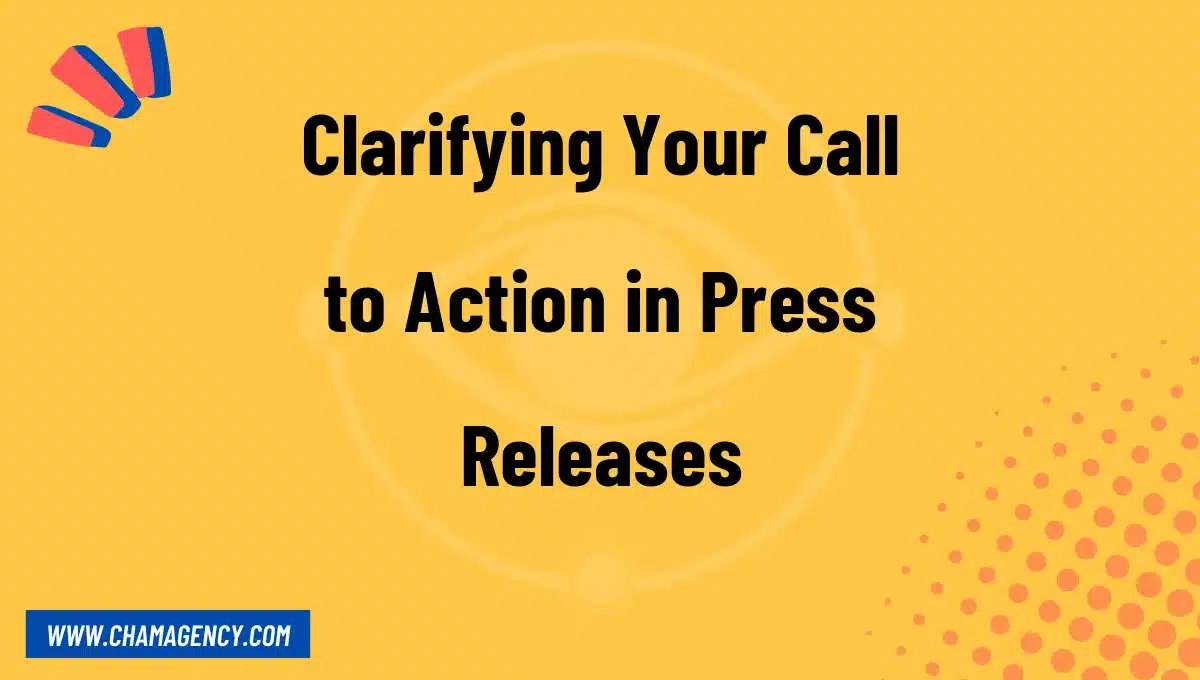In the world of public relations, press releases play a crucial role in disseminating important information about a company, product, or event to the media and the general public. They serve as valuable tools for companies to get their message across and create awareness. However, it is not enough to only share information in a press release; you also need to include a clear and compelling call to action.
The Importance of a Call to Action
A call to action (CTA) is a statement that tells the readers what they should do after reading the press release. It guides them towards taking a desired action, whether it’s visiting a website, making a purchase, signing up for a newsletter, or attending an event. Including a CTA ensures that your press release not only informs but also engages and motivates the readers to take the next step.
Without a call to action, your press release may end up being informative but not impactful. It is essential to provide a clear direction and encourage your audience to act upon the information you have shared. A well-crafted CTA can drive traffic, generate leads, boost conversions, and ultimately help you achieve your PR goals.
How to Create an Effective Call to Action
When creating a call to action for your press release, there are a few key elements to consider:
1. Be Clear and Specific
Ensure that your call to action leaves no room for ambiguity. Clearly state what you want your readers to do and provide specific instructions. For example, if you want them to visit your website, mention the URL and provide a direct link. The clearer and more specific your CTA, the easier it is for your audience to follow through.
2. Make it Compelling
A compelling call to action is one that resonates with your target audience. Understand their needs, desires, and pain points, and tailor your CTA accordingly. Use persuasive language, highlight the benefits, and create a sense of urgency to prompt action. By tapping into the emotions and desires of your readers, you can increase the chances of them taking the desired action.
3. Keep it Concise
It’s important to keep your call to action concise and to the point. Avoid lengthy sentences or complex instructions that might confuse your readers. A short and straightforward CTA is more likely to grab attention and elicit a response.
4. Use Active Language
Utilize active language in your call to action to create a sense of urgency and encourage immediate action. Instead of passive phrases like “You are invited to,” use more active phrases like “Join us now” or “Get your tickets today.” This helps convey a stronger sense of urgency and encourages prompt engagement.
5. Offer Incentives or Rewards
To further motivate your audience to act, consider offering incentives or rewards. This could be a discount, a free trial, an exclusive download, or any other valuable offer that aligns with your press release. By providing an added benefit, you can increase the likelihood of a positive response.
An Example of a Well-Crafted Call to Action
Here’s an example of how a call to action can be effectively incorporated into a press release:
“Are you ready to revolutionize your business? Visit our website at www.example.com and sign up for our exclusive webinar series to learn the secrets of success from industry experts. Take action now, as spots are limited! Don’t miss out on this incredible opportunity to take your business to the next level.”
In conclusion
A call to action is a vital component of a press release. It guides your readers towards the desired action, helps achieve your PR objectives, and drives engagement. By being clear, compelling, concise, and utilizing active language, you can create a powerful call to action that motivates your audience to take the next step.









